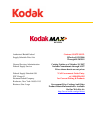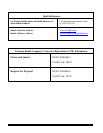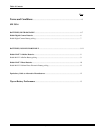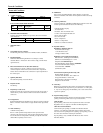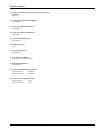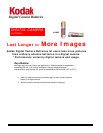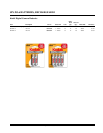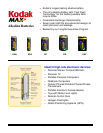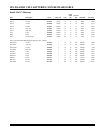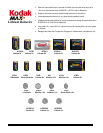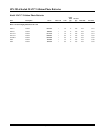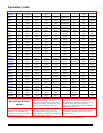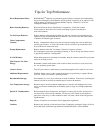
Contract GS-07F-0115L Update as of October 18, 2007 13
Tips for Top Performance
Device Replacement Policy: KODAK MAX
TM
Batteries are guaranteed against defects in material and workmanship.
Any device damaged by these batteries will be repaired or replaced (at our option) if sent
with the battery or batteries to Eastman Kodak Company. Guarantee void if non-
rechargeable battery is recharged.
Before Inserting Batteries: Read and follow the device manufacturer’s instructions. Check the symbols
inside camera or other device for correct positioning of positive and negative
ends of the batteries.
Use the Proper Batteries: Replace batteries with only the specified size and type. Remove all used batteries and
replace with your new KODAK MAX
TM
Batteries. Do not mix fresh with used batteries
or batteries of different types or brands.
Clean Compartment
Contacts: Battery compartment contacts may need occasional cleaning due to dirt or debris that
prevents good contact. A clean eraser works well (be careful not to contaminate other
areas of the device with eraser dust).
Prompt Replacement: Replace batteries when the “low battery” indicator, if present, activates.
Do not attempt to rejuvenate any battery by heating it. Do not charge any battery unless it
is specifically marked as “rechargeable.”
In Cold Weather: When taking pictures in extremely cold weather, keep the camera warm inside your jacket
until you are ready to use it.
More Features Use More
Energy: Remember, cameras with features such as built-in flash, motor drive, zoom, auto-focus,
etc., use up battery power faster.
Conserve Power: Turn off your camera or other battery-powered photographic device when it’s not in use.
Additional Requirements: Databack, frame-count, or other camera features may be powered by a separate lithium
coin cell. Check your camera’s operating manual.
Recommended Storage: Store batteries in a cool, dry location out of reach of children. If the device containing the
batteries will not be used for an extended period, remove the batteries.
Low-Temperature Storage: Batteries may be stored at reduced temperatures to slow the self-discharge rate, but be
sure to avoid water condensation on the battery prior to usage. Avoid high-temperature
storage.
Special 9V Considerations: Because batteries have both positive and negative contacts side-by-side, store them in a
way that avoids a short-circuit condition. Do not carry a 9V battery in your pocket or
purse since coins, keys, or other conductive items can cause a short circuit and generate
significant heat.
Disposal: Dispose of batteries in accordance with all appropriate regulations.
Cautions: Batteries may explode or leak and cause injury if improperly recharged, dispose of in fire,
mixed with used or different-type batteries, installed backwards, or disassembled.



